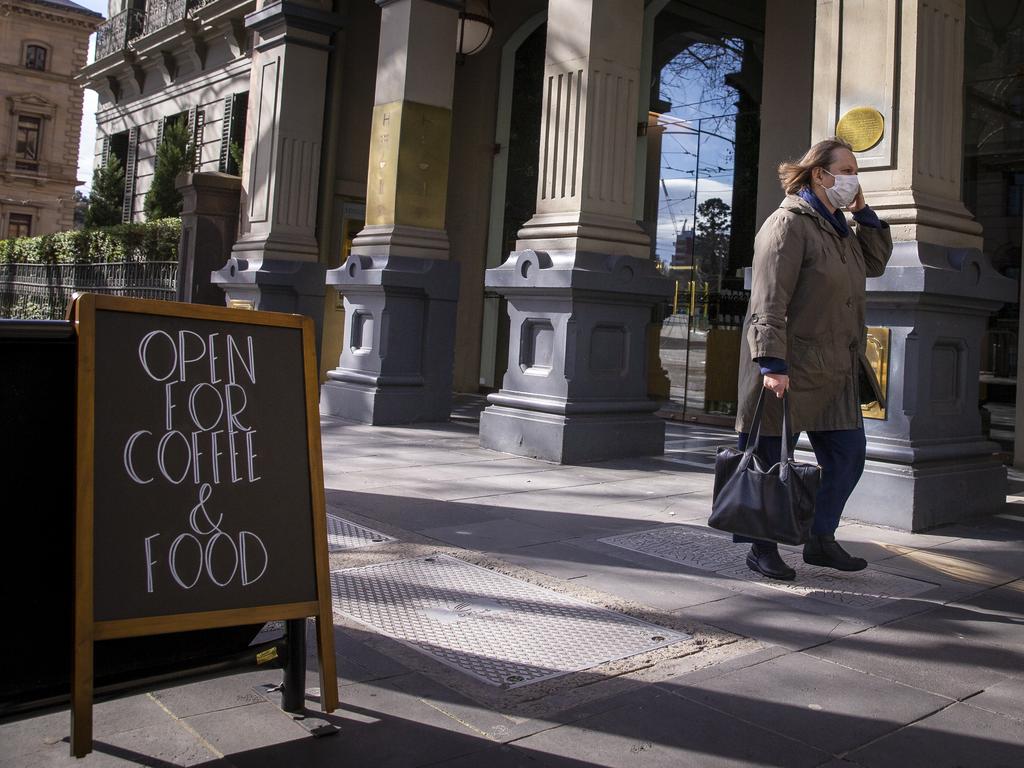
New restrictions on population movement, an immigration slowdown and a population decline are combining to challenge transport-based infrastructure investments that have long been a key part of defensive share portfolios.
The threat is particularly relevant to industry super funds, which have led the field with global commitments to roads, rail and airports in recent decades.
Transurban’s immediate problems relate to the extended lockdown in Victoria where it has key toll road assets — the stock fell by 3 per cent on Monday and at $13.14 remains well below the $16 level itwas at in February.
But more broadly Transurban and other listed stocks such as Sydney Airport and a wide range of unlisted funds are slowly facing the new reality that the existing traffic projections are simply not going to materialise in the year ahead.
Moreover, there are growing signs that some of the smart money is already moving out of what had been better than average investments, where the implicit price has always been illiquidity (it is very difficult to buy or sell tradeable parcels of many infrastructure investments).
In its annual review issued a few days ago, the Future Fund reported it had taken ‘‘write-downs’’ on its infrastructure portfolio in order to reduce its holding in the area. Among assets sold off by the fund in recent months are interests in London’s Gatwick Airport.
The Future Fund has been dropping its exposure to traditional infrastructure assets, with total investments down more than $1bn over the past 12 months.
Meanwhile, other institutional investors remain solidly committed to infrastructure stocks, judging by their response to the $1.3bn raising at loss-making Sydney Airport. But retail investors were not so enthusiastic, with the company reporting that 58 million shares were left unsold in the retail component of the exercise after retail investors did not take up all their rights.
Along with the reality of lower traffic numbers at airports and toll roads, the infrastructure sector is also losing a battle against so-called growth stocks where the prospects of strong revenue or profit growth is given greater weighting than regular income flows.
As Citi’s Liz Dinh suggested in a note this week: “Performance out of the reporting season is likely to see a continuation of patterns observed since 2018.”
Dinh pointing to healthcare, food, beverage and technology as sectors that were expected to steam ahead.
But most of the action in infrastructure is not on listed markets; rather it is in unlisted funds which reflect the fundamentally illiquid nature of the underlying investments.
The top-performing industry fund Hostplus has only recently opened up its infrastructure funds to retail investors who are not fund members; but the recent performance of both the Hostplus Infrastructure units and the Hostplus IFM infrastructure units have both shown a slight decline in recent weeks.
Similarly, one of the most popular unlisted infrastructure funds open to retail investors, IPIF, has also shown signs of fading performance. The IPIF fund has had a 6.6 per cent annual return since inception but over the year to June the return was 0, and in the three months to June it was -0.7 per cent.
Looking ahead it is the income-producing transport infrastructure assets that clearly remain the most vulnerable; alternative infrastructure assets such as data centres remain very popular.
Separately, infrastructure building and development should also have a much better outlook since they will be underpinned by state governments trying to rebuild economies flattened by COVID-related shutdowns.
Natalie Keogh, an economist at Macromonitor, has forecast the sector’s headwinds will not impact the planned construction of new infrastructure projects.
“This is because the transport sector was already in the ramping-up stages of large urban renewal, maintenance and improvement programs, and this cycle has now combined with the need to provide economic stimulus in the wake of the coronavirus crisis,” she suggests.








A sell-off in Transurban may be a sign of things to come for the infrastructure sector, where tailwinds have suddenly turned into headwinds.